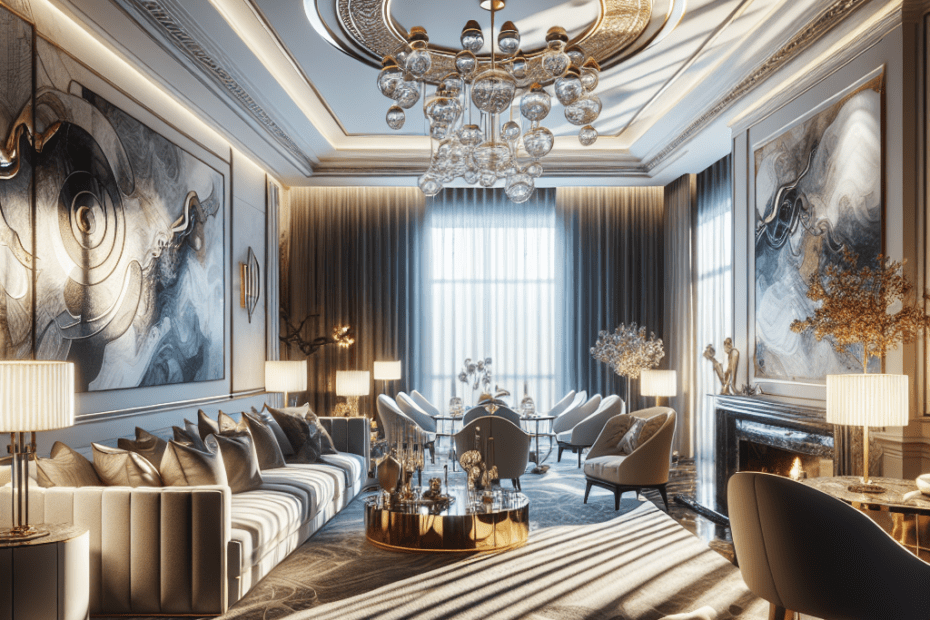The Power of Accent Lighting in Interior Design
In the fascinating world of interior design, they are always seeking ways to enhance the beauty and functionality of spaces. Accent lighting in design stands out as a powerful tool that not only illuminates a room but also adds depth, mood, and style. Whether highlighting a bold painting or making a room feel cozier, accent lighting plays a crucial role in transforming indoor spaces.
Accent lighting is more than just a light source; it’s a versatile design element. According to the U.S. Department of Energy, lighting accounts for about 15% of the electricity used in homes, and smart use of accent lighting can help reduce this consumption by focusing light where it’s most needed.(source)
Enhancing Aesthetics
One of the primary purposes of accent lighting in design is to enhance the aesthetic appeal of a space. Designers use accent lights to draw attention to specific features in a room, such as artwork, architectural details, or decorative accessories. This not only adds visual interest but also helps create a focal point that ties the room together.
They often choose recessed lighting, track lighting, or pendant lights for their accent lighting needs. These options allow for focused illumination and are highly flexible, making them suitable for various design styles and spaces.
Setting the Mood
Accent lighting can significantly affect the mood and ambiance of a room. By adjusting the brightness and color temperature, they can create a warm, inviting environment or a cool, modern vibe. For instance, using dimmable accent lights can transform a lively living room into a cozy retreat with just the twist of a knob. This capability showcases the power of lighting to influence emotions and experiences within a space.
Improving Functionality
While accent lighting is largely associated with aesthetics, it also plays an important role in improving the functionality of a room. Well-placed accent lights can provide ample illumination for tasks like reading or cooking, without overpowering the primary lighting. They use these lights to complement ambient and task lighting, creating a balanced lighting scheme that enhances both beauty and utility in a space.
Energy Efficiency
Modern accent lighting solutions can also support sustainability goals. They increasingly prefer LED lights for their accent lighting needs because of their long lifespan and low energy consumption. A study by the International Energy Agency shows that LEDs can use up to 75% less energy than traditional incandescent bulbs and last 25 times longer.(source)
Key Takeaways
- Accent lighting is a critical tool for enhancing the aesthetics, mood, and functionality of interiors.
- Different types of accent lighting, like recessed or track lighting, offer versatility in design applications.
- Accent lighting can create moods, highlight focal points, and improve sustainability efforts with energy-efficient options.
- LED accent lighting solutions are both functional and environmentally friendly.
Types of Accent Lighting
Different accent lighting options cater to various design needs. The table below summarizes some popular types of accent lighting and their common uses:
| Type | Common Uses |
|---|---|
| Recessed Lighting | Highlighting paintings, sculptures, or architectural features. |
| Track Lighting | Flexibly illuminating different parts of a room or gallery. |
| Wall Sconces | Providing ambient light and decorative accents in residential or commercial spaces. |
| Under-cabinet Lighting | Brightening kitchen countertops and workspaces. |
FAQ
- What is accent lighting?
Accent lighting is a type of lighting used to highlight specific objects or areas in a room, adding visual interest and depth. - Why is accent lighting important in design?
It enhances the aesthetics, sets the mood, and improves the functionality of a space, making it more engaging and usable. - What are some examples of accent lighting?
Examples include recessed lighting, track lighting, wall sconces, and under-cabinet lighting. - Can accent lighting save energy?
Yes, especially when using energy-efficient LED bulbs, which reduce energy consumption and utility costs. - How do they choose the right accent lighting?
They consider the room’s purpose, design style, focal points, and desired mood to select suitable lighting fixtures.
